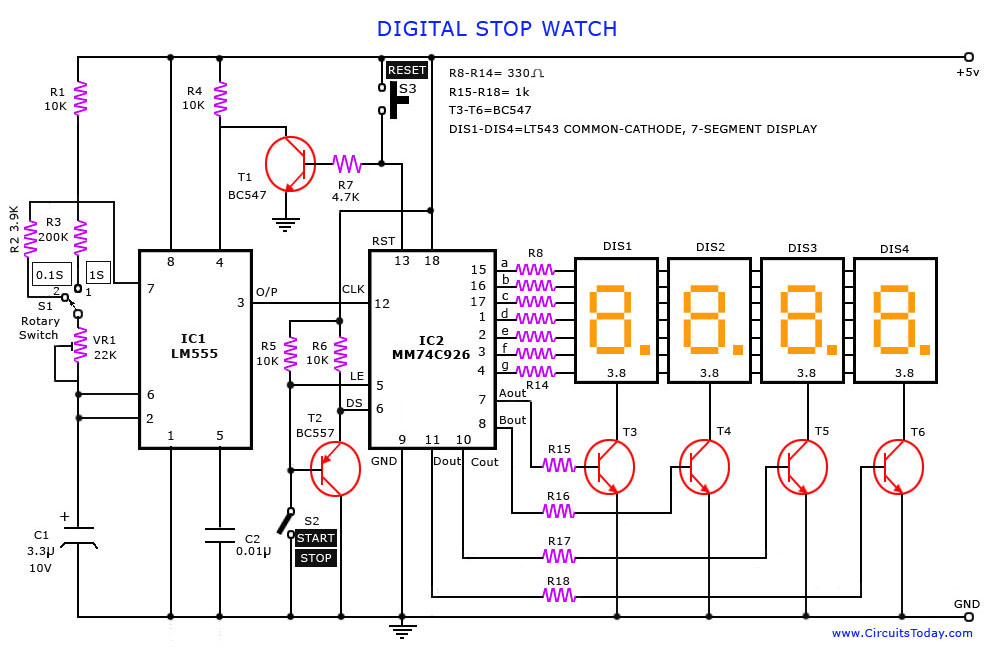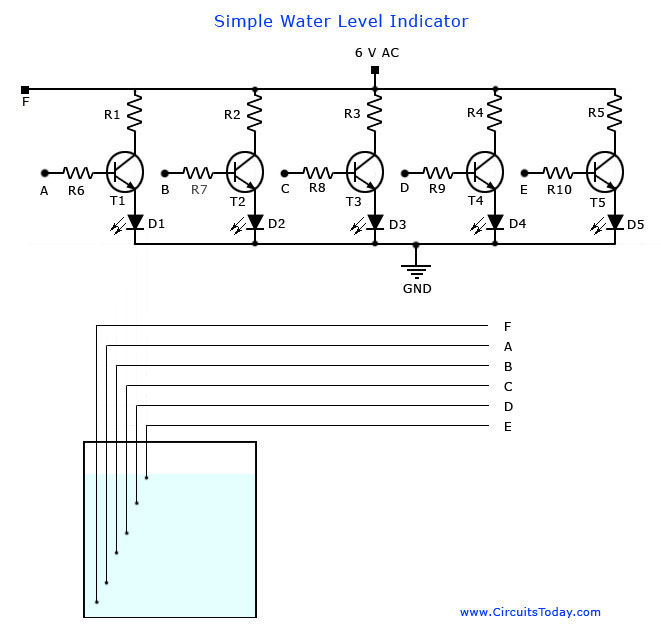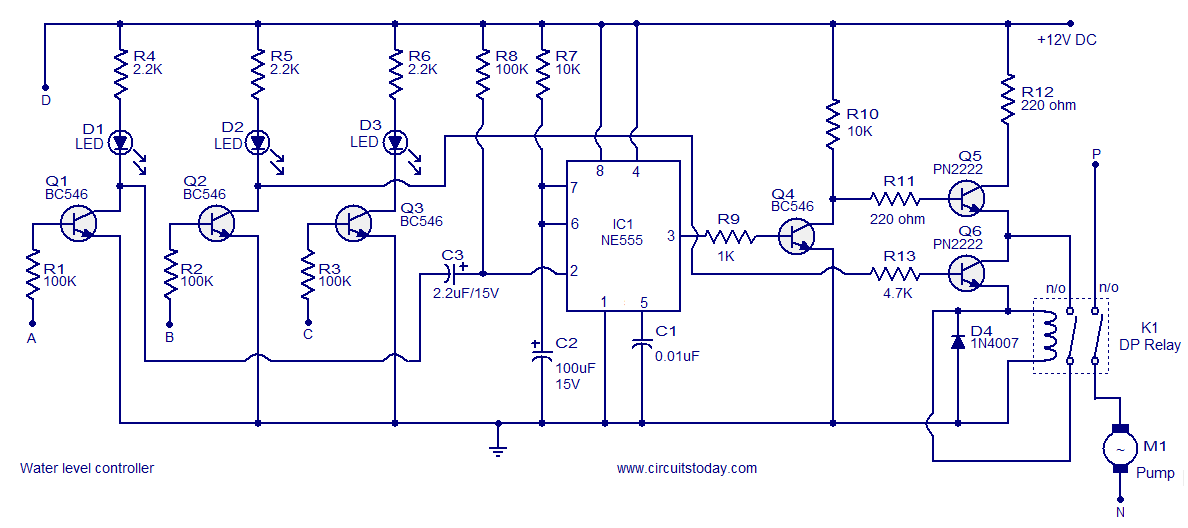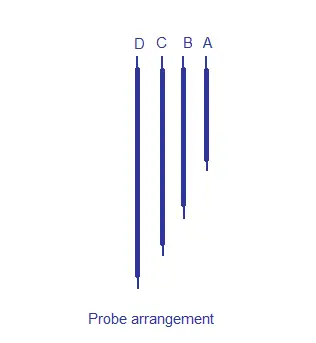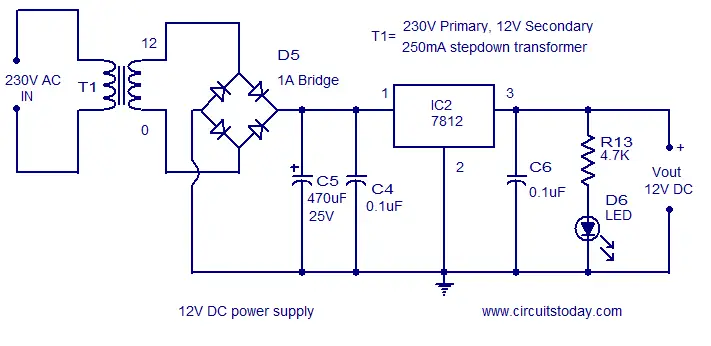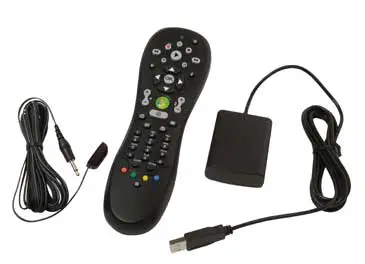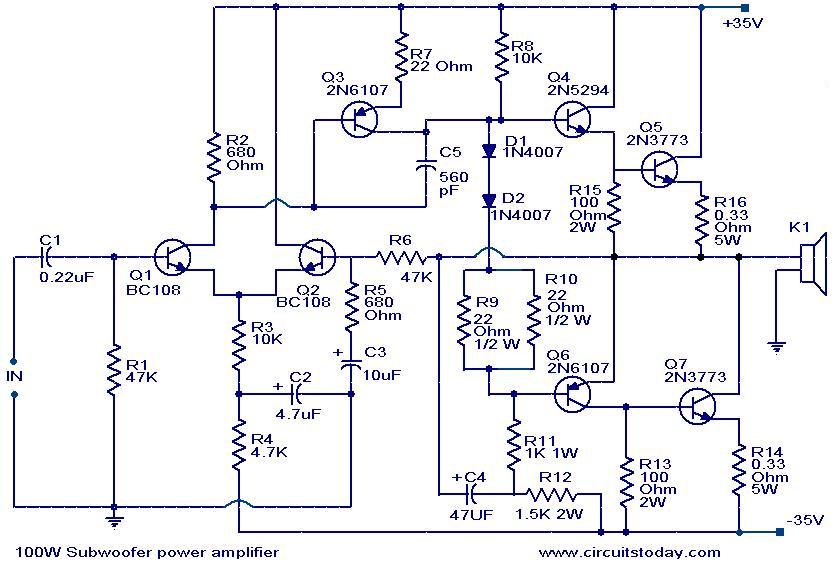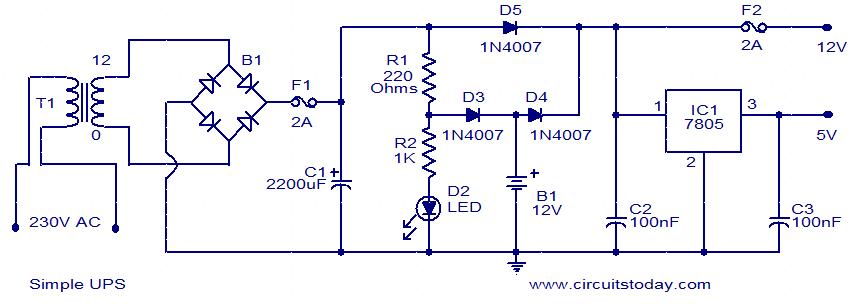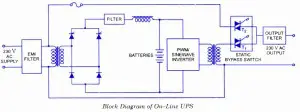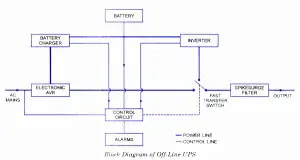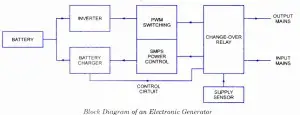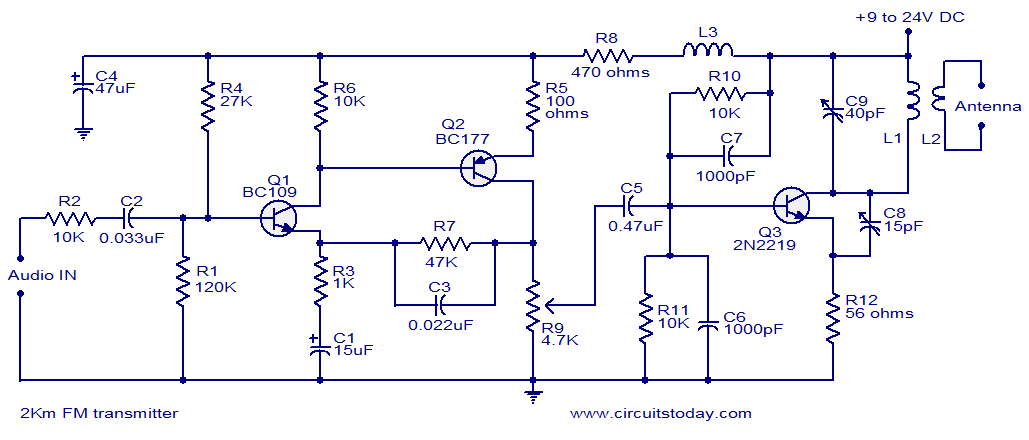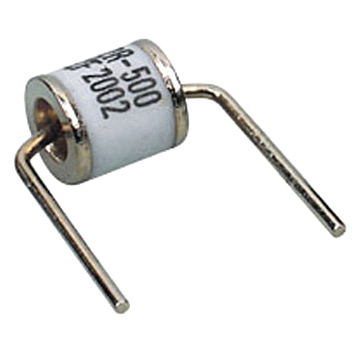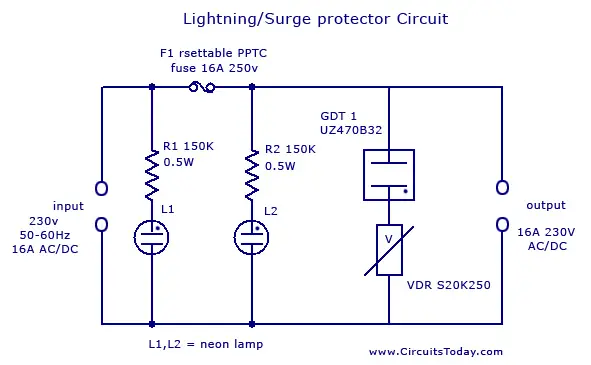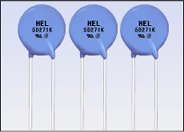Multi-channel Audio
Multi-channel audio systems are widely used in modern sound devices. The term “multi-channel audio” means that, the audio system can be capable of handling multiple audio channels (usually called audio tracks) to rebuild the sound on a multi-speaker setup.
Usually two digits separated by a decimal (.) point (2.1, 4.1, 5.1, 6.1, 7.1, etc.) are used to classify the various kinds of speaker set-up, this number basically depending on how many audio tracks are used. Some audio systems only have a single channel (called monophonic sound or single channel audio) or two channels (stereophonic sound or 2.0 channel sound)
The first digit shows the number of primary channels (called satellite units), each of which are reproduced on a single speaker (these speakers are capable for handling the frequency range from 100Hz to 22Khz), while the second (decimal digit) refers to the presence of LFE (Low Frequency Effect), which is reproduced on a subwoofer.
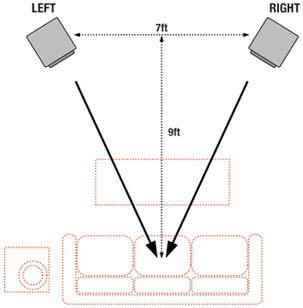
- Stereo Setup
Surround Sound System
Surround sound is a term used to describe a type of audio output in which the sound appears to “surround the listener” by 360 degrees – that is, the technology gives the impression that sounds are coming from all possible directions.
Surround sound is a way to provide a more realistic and engaging experience. All technical aspects aside, surround sound works because multiple audio channels are received through speakers that are positioned at various locations in the room. This is programmed into the source and the sound tracks are decoded when the source is played.
The Surround Sound Setup
The main component of a surround sound setup is a multi channel or digital coaxial/optical audio decoder. Using a DVD/HVD movie, the audio is encoded when the DVD/HVD is produced by packing multiple audio channels into a compressed format for storage. When you play the DVD movie, your DVD player or A/V receiver (commonly called a home theatre receiver) decodes the encoding scheme (i.e. Dolby Pro Logic II or DTS for example). Decoding capabilities of an A/V receiver are built in. Most A/V receivers today can decode Dolby Digital and Digital Theater Sound (DTS) (DTS channel usually a coaxial or optical audio channel. It is a single channel digital pin that multiplexed with several channel. The decoder decodes the DTS sound from single channel to multiple channels), while higher-end receivers may also include DTS-ES or THX Surround.
Multi-channel Surround Sound Systems
- 5.1 Surround Sound Systems
5.1 Surround sound systems are one of the widely used surround sound setup in home theater systems. Usually- Dolby Digital and DTS encoded in a DVD are 5.1 channel audio formats. 5.1 surround sound technologies produces five channels of sound in the left, right, center, left-surround and right-surround positions. These five channels are the minimum required to produce 5.1 surround sounds. The dot decimal (.1) represents the channel for LFE (low frequency effects), which is usually sent to a subwoofer. Other 5 units are capable for handling the frequency range except low frequency(Usually they are capable of handling the frequency range from 100Hz to 22Khz and no need for any other higher frequency component like tweeter). These five units are usually called satellite units. The arrangements of a 5.1 surround sound setup shown in the picture below.
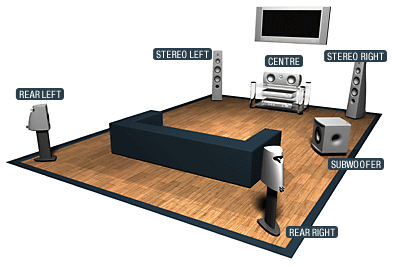
- 5.1 surround sound
- 6.1 Surround Sound Systems
6.1 multichannel sound technologies is the advanced version of 5.1 surround sound technology. 6.1 technology uses the same set-up as a 5.1 system, but it has the addition of a sixth speaker that takes the rear-center surround position (or back surround position) to provide a more 3-D realistic surround sound effect. 6.1 surround sound uses extended surround sound formats, such as THX Surround EX, Dolby digital ES and DTS-ES. The 6.1 channel surround sound setup is shown in the picture.
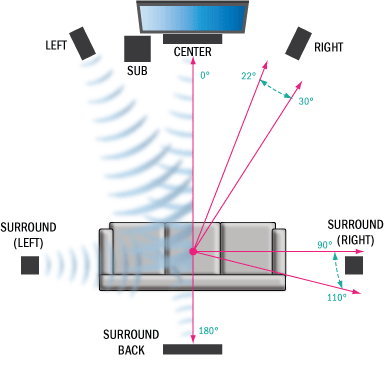
- 6.1 Surround Sound Systems
- 7.1 Surround Sound Systems
7.1 channel audio systems is the modified version of 6.1 channel and also provide more realistic experience than 6.1 setup. In this system splits the single rear-center speaker into individual left- and right-rear surround. These systems are not a true discrete 7.1 channel system as 7.1 formats don’t currently exist. In a true discrete 6.1 surround system, the back center surround position is separate from the surround left (SL) and surround right (SR) positions. A 7.1 channel system uses matrixes extended surround where the left-back and right-back (rear-center surround) multichannel are blended together and stored. The structure of a 7.1 setup is given in the Picture below.
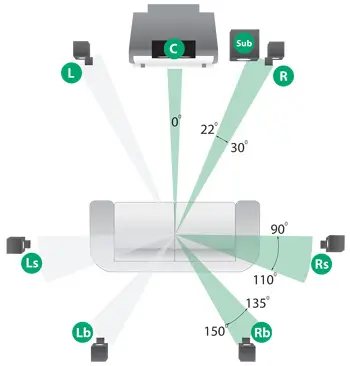
- 7.1 Surround Sound Systems
- 10.2 Surround Sound Systems
10.2 channel surround is the future surround sound technology that Developed by THX corporation, the name itself, 10.2 is an advanced version of 5.1 technology but 10.2 is twice as good as 5.1. In a 10.2 surround sound 14 channels are used. This includes five front speakers, five surround channels, two LFE and two heights, plus the addition of a second sub-woofer. This technology is considered as future TRUEHD.The Diagram of a 10.2 TrueHD setup is shown below.
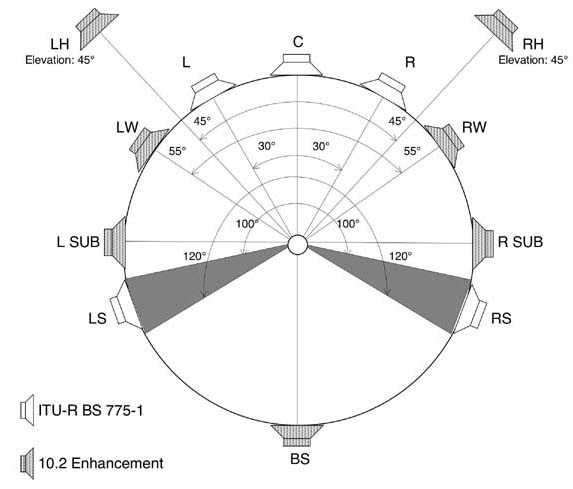
- 10.2 Surround Sound Systems
Common Surround Sound Formats
Dolby surround is the consumer version of Dolby analog film decoding. This technology was introduced in 1982 which is capable of handling stereo and hi-fi audio. This audio format is commonly found in VHS and stereo hi-fi systems. In this surround format, the multichannel audio multiplexed into two audio channels (left and right channels)and decoded by using Dolby pro logic decoder ,then it recreates the four channel Dolby surround experience.
Dolby digital is the standard surround sound format which provides high quality and highly realistic experience. This audio is developed by Dolby Corporation. Dolby digital audio is also known as Audio Codec-3(AC3). This audio format provides a high quality 5.1 surround experience. Normally this audio format used for the creation of DVD and Blue ray movies. Some video games and play station units are also available in this surround sound format.
Dolby Digital EX is the modified version of Dolby digital audio. This extended format contains an additional surround sound unit (called center surround channel) for creation of more realistic experience. Dolby digital EX needs Dolby EX decoder. This surround effect also support 5.1, 6.1, 7.1 channel playback. This audio format usually available on DVD, HVD, blue ray, play stations, DTV broadcasts, etc .
Dolby Pro Logic IIx is an advanced version of Dolby Digital EX technology. By using this technology, we can expand the 5.1 channel Dolby surround system into 6.1, 7.1, 10.2 channel surround. The Dolby digital prologic usually use three modes for listening (movie, music and game modes).This surround technology provide more rich and depth surround sound effect than conventional surround sound system. This audio is normally encoded in DVD, HVD, BRD HDTV, play stations, etc.
Dolby True HD surround sound is an advanced version surround sound that provides incredible High Definition experience to the listener. This surround sound format is also known as next generation surround sound format. Dolby True HD format only support HD based media and this technology provides 100% lossless audio encoding, bit rate up to 18Mbps and support 8.1 or higher channel with 24 bit/96Khz audio. This format also supports HDMI. Normally BRD and HVD are used for encoding this true surround.
DTS is another digital surround format developed by DTS Corporation. It is a Multichannel digital surround format widely used in both consumer and commercial applications. The DTS audio system must have a DTS decoder and optical/coaxial digital decoder for decoding this surround. DTS is normally available in a single channel multiplexed format (2.1 to 11.1 channel surround sounds can be multiplexed into a single optical digital or coaxial output format).DTS format is also available on DVD,HVD and BRD’s.
DTS-ES (digital theater sound –Extended Surround) is an advanced version of normal DTS. This surround system is usually available in 6.1 or higher channels. This provides us with more true digital experience than conventional DTS system. This unit also requires an additional DTS-ES decoder for the creation of a back-surround effect. The system is compatible with all current extended surround formats and an auxiliary surround channel is also provided for other applications.
TruSurround XT is the next generation of SRS TruSurround. The main advantage of this surround system is that it’s capable of handling 2.1 channel surround to 10.2 channel surround (support head phone media too).Audio is encoded in multiplexed format. and require DTS true surround decoder. This audio usually encoded in BRD’s and HVD’s
Read more: http://www.circuitstoday.com/#ixzz1N9LzTlIU
Under Creative Commons License: Attribution



